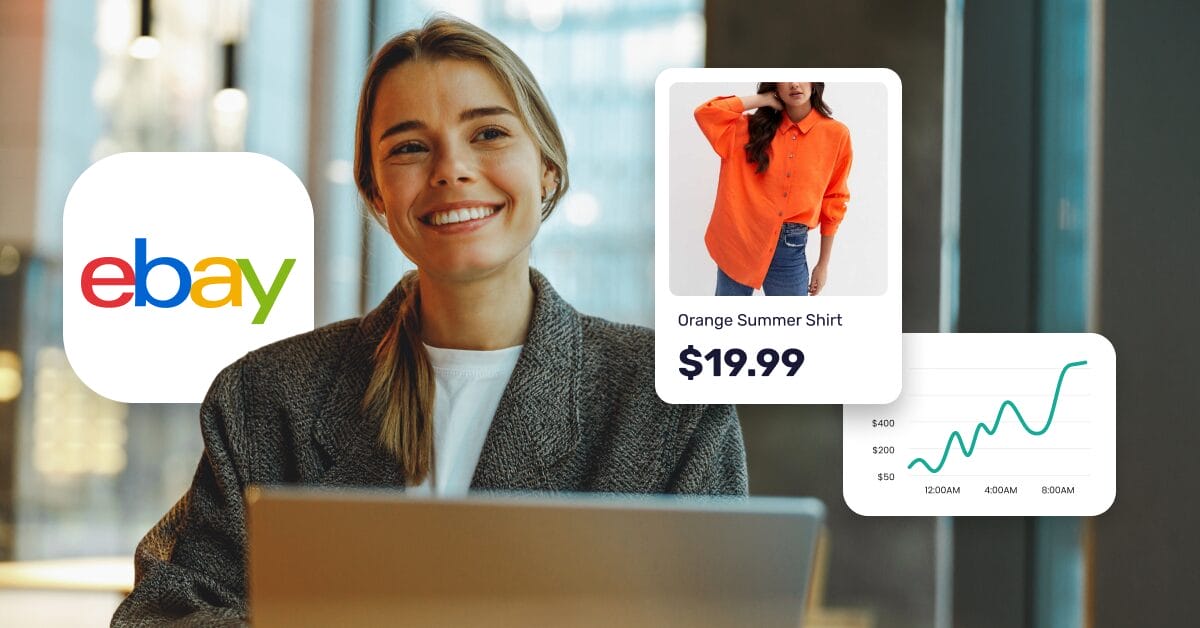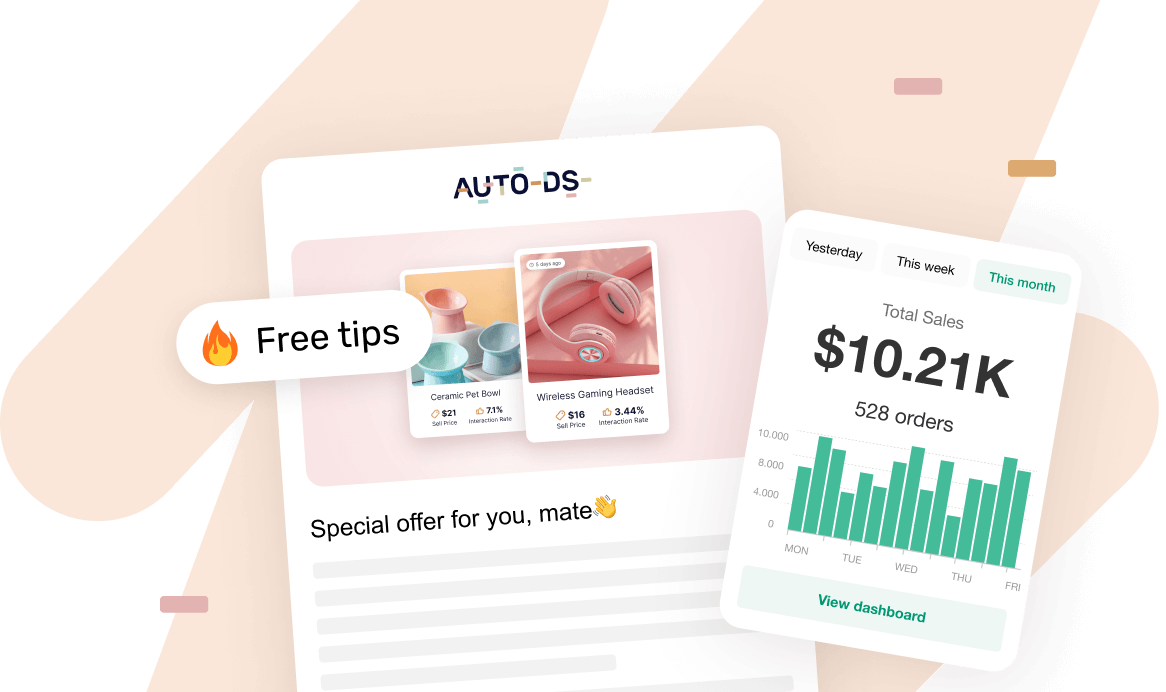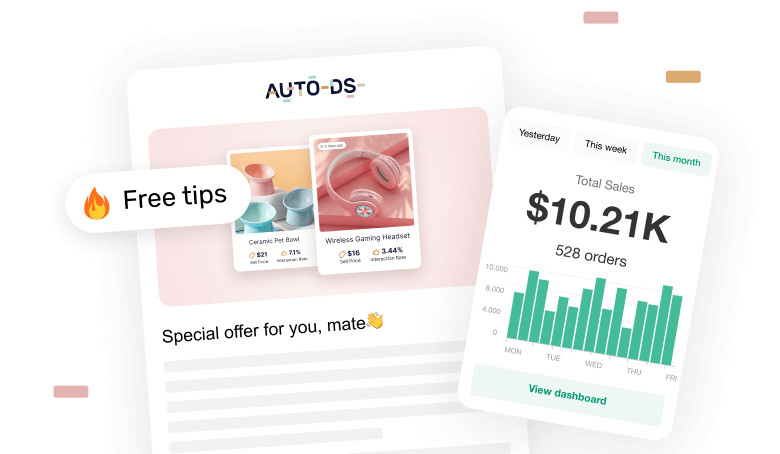Ever wondered why $9.99 feels so much cheaper than $10? That tiny cent difference is one of marketing’s oldest tricks, and it still works like magic. Welcome to the world of psychological pricing, where perception often beats logic, and mastering it can seriously boost your dropshipping profits.
In this guide, you’ll learn what odd-even pricing is, how it works, and how to use these techniques as part of effective dropshipping pricing strategies to boost conversions and make smarter pricing decisions. Plus, we’ll break down how AutoDS fits into the mix. (Spoiler: with its smart pricing automation, AutoDS helps you test and optimize prices that hit the sweet spot where psychology meets profit.)
The psychology of prices affects how online buyers perceive value and make decisions.
Odd prices trigger a bargain feeling, while even prices convey quality and luxury.
Applying odd or even pricing strategically by niche optimizes margins and positions your store for success in either budget-friendly or premium markets.
Avoiding randomly mixing odd and even prices and always considering cultural pricing norms are crucial to maintaining trust and consistency with your audience.
AutoDS automates price adjustments, letting sellers implement psychological strategies across multiple products to maximize profits without manual work.
What Is Odd-Even Pricing?
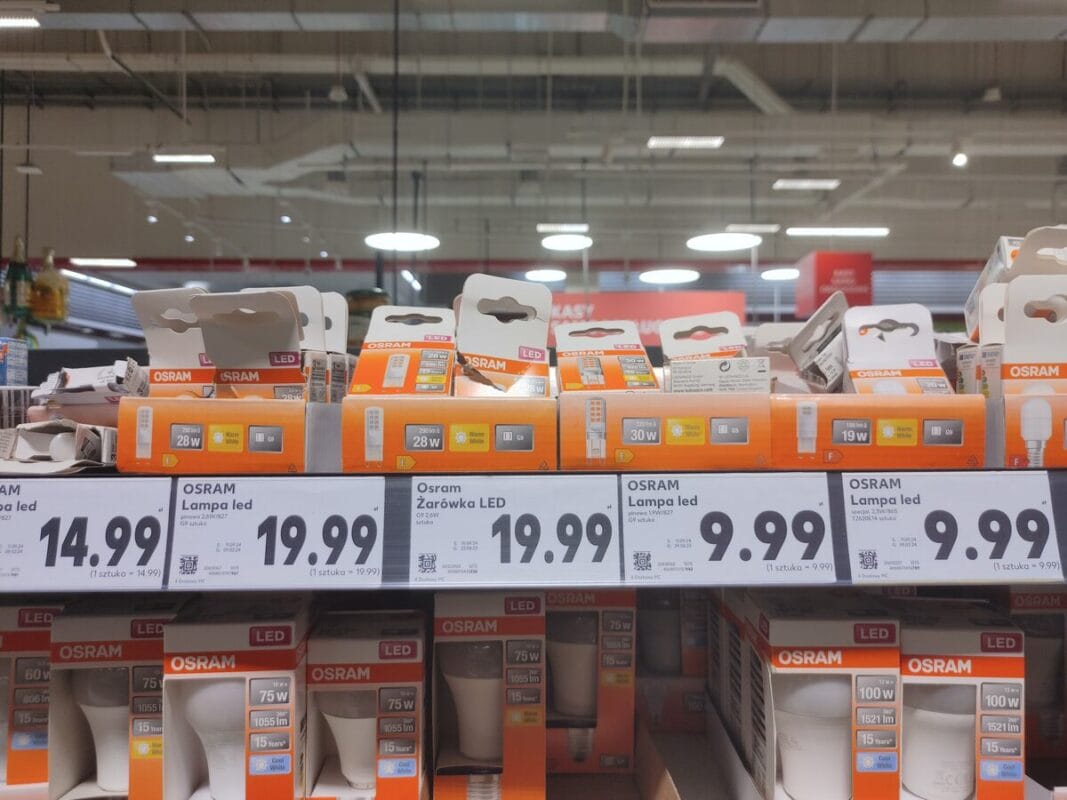
Odd-even pricing is one of the simplest yet most powerful tricks in pricing psychology. Simply put, it’s about whether a price ends in an odd number (think .99 or .95) or an even number, like .00 or .50.
Odd prices, such as $19.99 or $49.95, give shoppers the delightful feeling of a bargain. Even if it’s just a penny, our brains hear “deal!”. That’s why over 90% of retail prices end in .99 or .95: it’s a subtle nudge that encourages a purchase.
Meanwhile, even prices such as $20.00 or $50.00 scream luxury, quality, and premium vibes. They feel clean, rounded, and often more upscale, ideal for products you want to position as high-end.
There’s a reason sellers keep using these tricks: they sell. But there’s more to it than slapping a “.99” at the end: it’s about understanding how customers think, feel, and decide.
The Psychology Behind Pricing
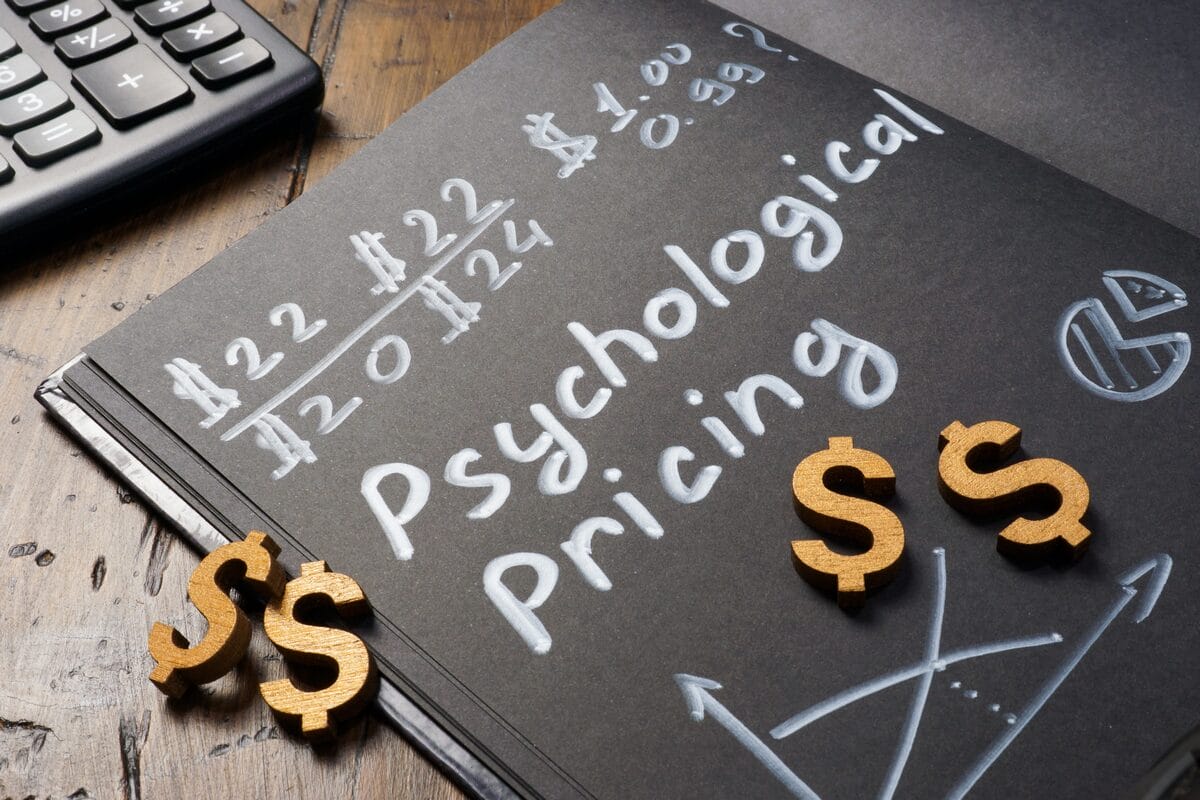
It’s crazy how a tiny cent can change how we feel about a price. That subtle difference between $19.99 and $20.00? Pure psychology at work (or what we call perceived value). Our brains love scanning from left to right, so we focus on the leftmost digits first. That tiny “9” at the end tricks us into thinking we’re getting a bargain. Magical, right?
Odd-even pricing also taps into the battle between emotional and rational buying. As we touched on earlier, odd prices make us feel like we’re snagging a deal, triggering an emotional “yes!” moment. Even prices convey stability and quality, perfect when you want your product to feel classy rather than bargain-bin. Think about a sleek $50.00 watch versus $49.95 watch: same cost, totally different feelings.
Here’s where it gets really clever: the anchoring effect. Setting an odd or even price isn’t just about that one item: it influences how customers perceive your upsells, bundles, or add-ons. For example, if your main product is $49.95, a $29.95 add-on feels reasonable; that same add-on next to a $50 even price might feel cheaper… or maybe you want it to feel like luxury? Pricing psychology lets you play with those expectations.
That brings us to an important nuance: not all pricing tricks work everywhere. In certain markets, rounded prices are seen as fair and professional, while in others, the classic “.99” just works like a charm. So it’s important to always keep your target market in mind before deciding if your price should charm the bargain hunter or impress the luxury seeker.
Odd-Even Pricing in Dropshipping
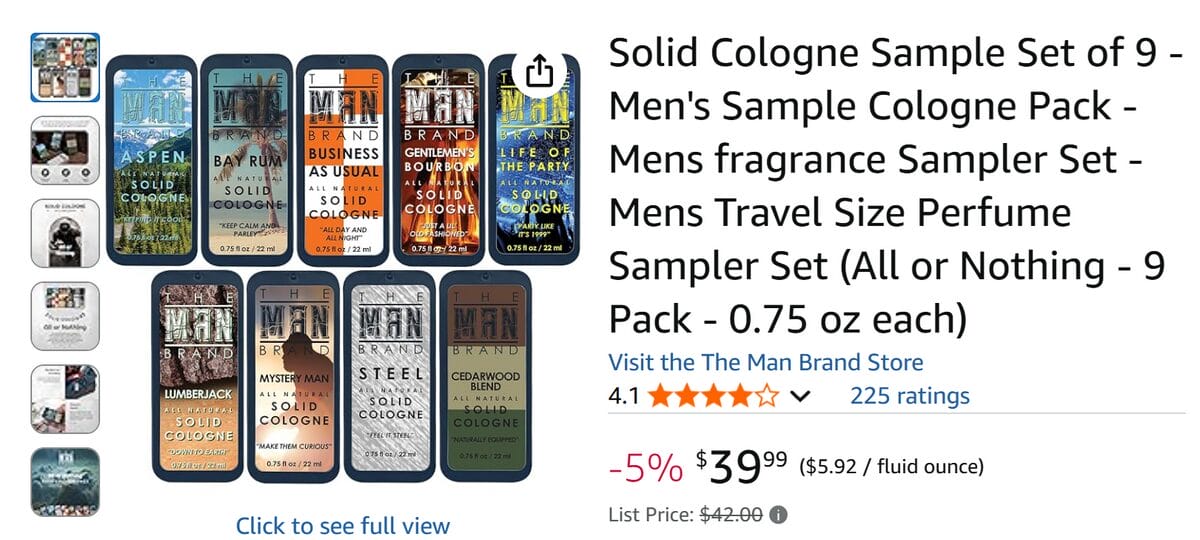
Now that we know how our brains react to numbers, let’s bring this down to the dropshipping business reality. Odd-even pricing isn’t just a mind trick; it’s a real strategy to shape how customers value what you sell, without slashing your profit margins.
For budget-friendly products, odd prices like $9.99 or $14.95 instantly feel like a deal. They hit that psychological trigger where shoppers believe they’re saving, even if the difference is just a few cents. Perfect for gadgets, accessories, or impulse buys where perception drives the click.
On the flip side, even prices ($20.00, $50.00, $100.00) signal premium quality. Use them when positioning high-end products, luxury items, or anything where you want to say, “This one’s worth it.” They project confidence and elevate your brand’s image.
And here’s where it gets really fun: combining these approaches in your pricing tiers. Use odd prices for your entry-level products, and even prices for upgrades or bundles. This subtle contrast can nudge shoppers to spend more without feeling pressured: classic cross-selling and upselling psychology at work.
Practical Tips to Apply Odd-Even Pricing
Now that you know how pricing psychology works, it’s time to put it into action. These quick tips will help you price dropshipping products effectively and turn theory into real results:
📢 Test your price points: Don’t assume what “feels right”, test it. A/B test .99 vs .00 pricing on your top-performing products and analyze which drives higher conversions. Sometimes, even a single cent shift can influence buying intent, especially in competitive niches.
📢 Keep it consistent: Inconsistent pricing patterns confuse customers and weaken brand trust. If most of your products end in .99, keep it that way. Consistency reinforces brand identity and helps customers instantly recognize your store’s value positioning, whether budget-friendly or premium.
📢 Bundle smart: Bundles are perfect for odd pricing. Using $49.95 instead of $50 subtly highlights the deal value, framing the offer as a “save more” opportunity. Odd pricing adds psychological weight to the sense of getting more for less, which increases perceived savings and drives multi-item purchases.
📢 Show the discount: Odd prices shine in promotions. “Was $29.99, now $24.95” creates visual contrast and a sense of urgency that rounded numbers lack. The perception of a precise markdown (not a generic one) makes buyers feel the offer is intentional, timed, and worth acting on now.
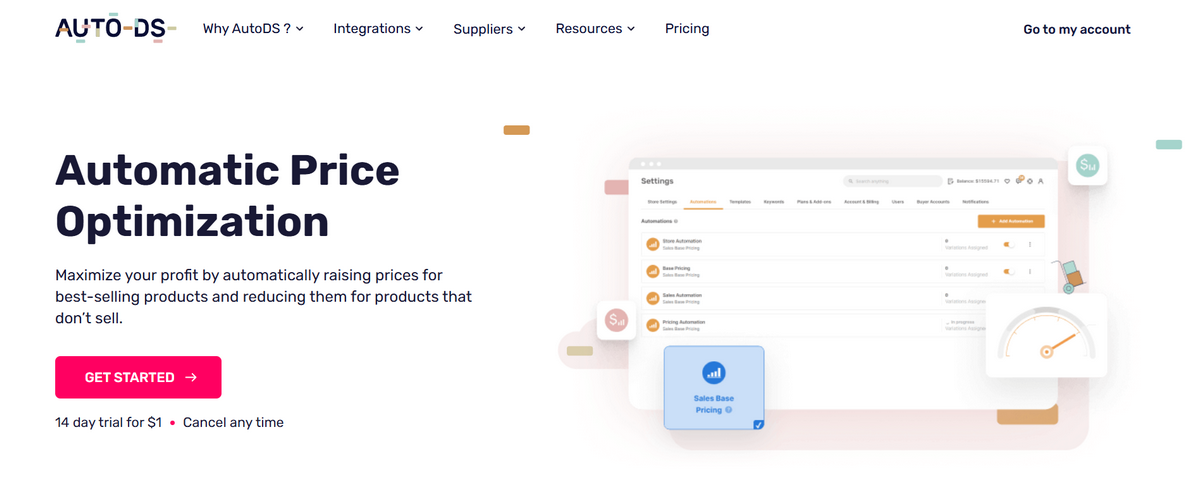
The best part? You don’t have to manually tweak prices or run endless tests to get results. AutoDS offers built-in price optimization tools that let you create smart rules, automatically adjusting your product costs based on real-time sales performance, supplier changes, and even competitor pricing.
This means your store can continuously apply psychological pricing strategies at scale, without you lifting a finger. The outcome? A fully automated system that maximizes profits, saves hours of manual work, and keeps your pricing always one step ahead of buyer behavior.
💡 Pro Tip: Combine odd-even pricing with dynamic discounts for seasonal sales. AutoDS automates these changes, so your price points stay optimized while you focus on running promotions and marketing campaigns.
Common Mistakes to Avoid
Even though psychological pricing is powerful, it can backfire if used carelessly. A few small missteps can confuse buyers, hurt brand perception, or even reduce conversions instead of boosting them. So before you go wild with those .99s and .00s, here are some common pitfalls to watch out for:
🚨 Using odd pricing for premium products: Applying .99 or .95 endings to luxury or high-end items can actually cheapen their perceived value. Customers shopping for exclusivity expect clean, rounded prices that feel confident and high-end. $200.00 says “luxury,” while $199.99 says “discount.”
🚨 Mixing odd and even pricing at random: Switching between odd and even prices without a clear strategy can confuse customers and break your brand consistency. Keep your pricing logic simple so it feels intentional and in tune across your store.
🚨 Ignoring cultural or currency norms: Pricing psychology isn’t universal. In some markets, rounded numbers convey honesty and professionalism, while in others, the classic “.99” trick still wins. Always study your audience before applying global pricing tactics. What convinces one group might turn off another.
📢 Marketing Tip: Highlight psychological pricing in your marketing copy. Phrases like ‘Only $9.95!’ paired with AutoDS pricing automation can reinforce urgency and make your offers feel irresistible.
Frequently Asked Questions
Does odd pricing really increase sales?
Yes, odd pricing can genuinely boost conversions, especially for value-driven or budget-friendly products. Studies in consumer psychology show that prices ending in .99 or .95 trigger a stronger sense of getting a deal, nudging hesitant buyers to click “Add to Cart.”
Should I use odd pricing for all products?
Not necessarily. Odd pricing works great for everyday or affordable items, but for premium or luxury products, even pricing (like .00 or .50) communicates trust, stability, and exclusivity. It’s all about matching your pricing tone to your brand identity.
Can odd-even pricing work internationally?
Mostly yes, but cultural context matters. In some regions, rounded numbers are seen as fair and transparent, while others associate .99 endings with better value. Always test locally before rolling out a universal pricing approach.
How do I test if it works for my store?
A/B testing is your best friend here. Try offering your top-selling products at slightly different price endings (like $19.99 versus $20.00) and track which version gets more clicks and conversions. The data will tell you what your customers actually respond to.
Can AutoDS or pricing tools help?
Absolutely. AutoDS allows you to automate price optimization and experiment with psychological price points across multiple products and marketplaces. It adjusts prices dynamically based on competition and performance, saving time while keeping your strategy sharp.
Master Psychological Pricing with AutoDS
By now, you’ve seen how odd-even pricing influences perception, triggers emotional and rational buying, and helps guide upsells and bundles. Applying these principles strategically can boost conversions, maximize profits, and position your store exactly where you want it, whether that’s value-driven or premium.
The kicker? Tools like AutoDS take the headache out of applying psychological pricing at scale. How? AutoDS helps dropshippers automate price optimization, apply your chosen odd-even strategies across multiple products, and continuously adjust based on performance, so you can focus on growth instead of tedious manual tweaks.
The time to act is now: the upcoming holiday season is perfect for testing and implementing these pricing techniques to capture eager buyers. Don’t let competitors get the edge while you sit on outdated pricing patterns.
💸 Ready to optimize your store with smart strategies? Start your 14-day trial for just $1 with AutoDS and put psychological pricing to work for your dropshipping business today!
Eager to learn more about eCommerce strategies? Check out the following articles:






